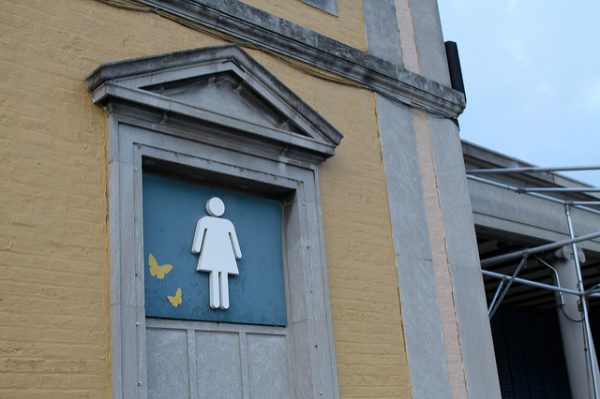
Like many instructors of the sociology of gender and feminist theory, I teach Simone de Beauvoir’s foundational text, “Introduction to the Second Sex.” Not only is Beauvoir part of the feminist cannon, but in some ways it seems even more relevant in today’s sociology classroom as Beauvoir deconstructs the very category of “woman.” She provides fertile groundwork for anyone looking to teach about sex and gender beyond the constructed gender binary. Unfortunately the reading can be a little difficult for undergraduate students to digest; this is where Sociological Images comes to the rescue! In this activity the instructor will show students contemporary, everyday examples of Beauvoir’s concept of women as “other” and engage them in a discussion about its continued relevance. This active and visual engagement is designed to incorporate Beauvoir into students’ working vocabulary.
This activity is ideal for Sociology of Gender and classes that teach feminist theory, but it could be modified for use in classes that explore gender in smaller doses like Family or Introduction to Sociology.
Materials:
You bring:
- Projector/internet/resources to look at a website in class
- Links to the Sociological Images posts you want to show
Students bring:
- Copy of Beauvoir’s “Introduction to the Second Sex,” assigned in advance
Instructions
- Assign Simone de Beauvoir’s “Introduction to the Second Sex” to be read by students in advance.
- Open the class by discussing the reading a little bit so that the main questions and topics are in the foreground of students’ minds. This could also be done by lecturing for the first section of class if that better suits your teaching style. For example, I ask the students to identify some of the key sentences of the reading, and what they think Beauvoir’s key question is. There are of course many important concepts in this reading, and in order to stimulate a comfortable discussion, it’s important to just let students nominate any and all sentences and ideas.
The ideas that I’ll focus on in the next steps are Beauvoir’s concept of woman as “other,” or, as she says, “A man is in the right in being a man; it is the woman who is in the wrong” (xxi); and “thus humanity is male and man defines woman not in herself but as relative to him” (xxii). Keep going until someone comes up with this; you can leave other questions and concepts that come up here on the backburner to come back to later in this class to see how the reading fits together as a whole. - Once you have students puzzling over this idea of women as other, pull up this post from Sociological Images for your class. The SocImages team refers to this same concept as “women versus people.”
- Expand each image in the post one at a time by clicking on it and ask the students “what do you see?” I do not show my students the pre-written analysis on the post but ask them to do the analytic work together in our discussion. Allow the students to start to discussing and problematizing each image out loud as a group as you go through each one by one.
- At the bottom of the post there are links to more; two of my favorites are scientists and females scientists and Body Worlds, although that example is not visual and will have to be read in advance and explained.
- Throughout this discussion it is important to clarify that the problem is not necessarily the segregation of the items or that there are separate women’s items (t-shirts are a great example here); it’s that, just as Beauvoir describes, one item is for “everybody,” while another item is specifically for women. Are women not part of everybody? You can draw the students back into a discussion of Beauvoir and her continued relevance today by engaging the question of what is hidden under these universal categories. How does one dominant group remain unmarked while others end up marked?
Possible modifications
- You could also give an assignment to students after this exercise to find their own local examples. (I have often had students come back and tell me in later class periods that they couldn’t stop seeing this concept at work in the world.) This could work well for discussion board posts, or an extra credit assignment, especially if coupled with a short paragraph explaining how the visual/example they found illustrates the concept with citations from the reading.
Additional resources
TROT on the Social Construction of Gender and Sex
A list of 5 reasons why pointlessly gendered products are a problem (even if they aren’t “women vs people”) from Sociological Images
A different example to illustrate the broader concept of how privilege operates for those in the “unmarked” group from Sociological Images
Dr. Meghan Krausch studies race, gender, disability, and other forms of marginalization throughout the Americas and in particular how grassroots communities have developed ways to resist their own marginalization. Read more of Meg’s writing at The Rebel Professor or get in touch directly at meghan.krausch@gmail.com.

Comments 1
Sharon Rema — February 28, 2019
Great content!